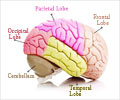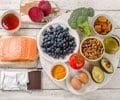Choosing what shirt to buy, what to order for lunch, how much to save, are some of the few decisions we make. These are prompted by a group of neurons.

‘Neurons assign values to individual options before making a decision and are called offer-value cells.’





In previous research, Camillo Padoa-Schioppa, PhD, an associate professor of neuroscience and the study’s senior investigator, identified different groups of cells in the OFC. "When we choose between an apple and a banana, some neurons assign a value to the apple, some neurons assign a value to the banana, and other neurons represent the choice outcome," he said. "Taken together, these different groups of cells seem to form a neural circuit that generates economic decisions."
In this study, the researchers examined how this neural circuit reorganizes when decisions are made in different circumstances.
During the experiments, Padoa-Schioppa and first author Jue Xie, a graduate student in Padoa-Schioppa’s lab, used a dozen different juice drinks. In each tasting session, the macaques chose between two different drinks. Subsequently, they chose between two other juice drinks.
"An animal first might choose between grape juice and apple juice, and some neurons would represent the value of the grape juice," said Xie. "Later, the animal might choose between kiwi punch and peach juice, and the same neurons that had assigned a value to the grape juice subsequently would assign a value to the kiwi punch. This means there is no such thing as a grape juice cell or an apple juice cell. The neurons become associated with one of the options available at any given time."
Advertisement
Although individual neurons re-map to represent the value of different options, the overall organization of the neural circuit remains stable, the researchers said.
The researchers also noted that two neurons associated with the same juice drink in the first set of the macaques’ decisions also were associated with the same juice drink in a second set of choices.
"If we look at individual cells, neurons are very flexible," said Padoa-Schioppa. "However, if we consider the whole network, the decision circuit is remarkably stable. This combination of circuit stability and neuronal flexibility makes it possible for the same brain region to generate decisions between any two goods."
Source-Eurekalert












